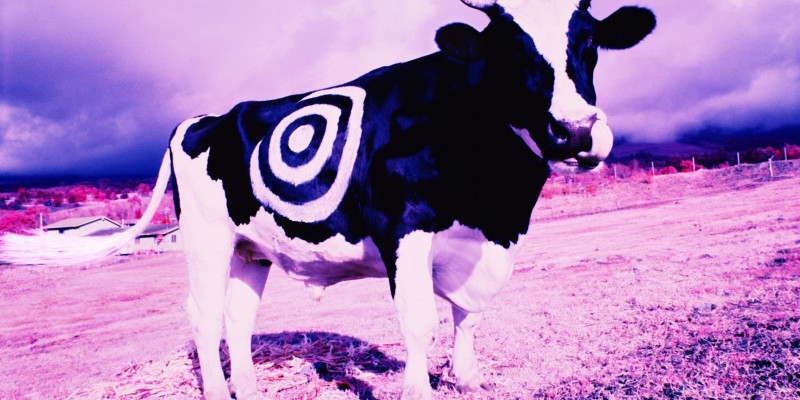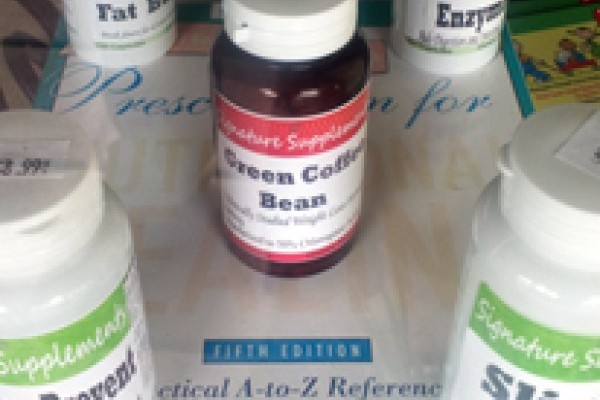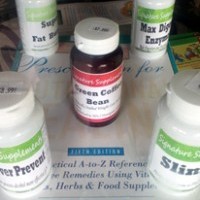
Growth Hormones in Food
Meat and dairy products form the basis of many Western diets. In fact, the popular perception is that a portion of meat and two glasses of milk every day will ensure good bones and muscle mass. However, many people are unaware of what actually goes into the cartons of milk they get from the local supermarket, or the cuts of beef they grill on the barbecue.
The ugly fact of dairy and meat (especially beef) production is that many large producers are extensively using growth hormones to boost production. This is not a new issue, bovine growth hormones, used in the US to boost beef and milk production, have been the focus of debate for some time now. But although growing numbers of consumers and scientists have expressed concerns about potential human health risks of this practice, the USDA and FDA have approved the use of six hormone growth promotants (HGPs) in the cultivation of beef cattle, and one more hormone used to increase milk productivity. Only a few other countries have approved the use of HGPs, while many others have banned their use.
Controversy also surrounds the fact that there are no labeling requirements in the U.S. for growth hormones in food. A recent study making a strong environmental case for the controversial cattle injections, has added a new twist to the debate. The growth hormone debate is centred around four main issues: who benefits from these growth hormones; animal health and welfare; food safety and environmental concerns.
The History of Artificial Growth Hormones
Growth hormones in milk
Bovine somatotropin or BST is a hormone naturally secreted by the pituitary glands of cows. Traces of BST are found in the milk secreted by the hormone injected animal. BST is also poularly known as BGH, or bovine growth hormone. It interacts with other hormones in cows' bodies to control the amount of milk they produce.
Scientists working for Monsanto, the agricultural giant, developed a genetically-engineered synthetic version of the hormone called recombinant bovine growth hormone or rBGH, that increased milk production by 10% to 25%. Approved by the U.S. Food and Drug Administration (FDA) in 1993, it was offered to interested farmers the next year. By 2008, a third of American dairy cows were being injected with rBGH.
Growth hormones in beef
The US cattle industry started using hormones to enhance beef produciton in 1956. They used DES (diethylstilbestrol) – which had been approved for use in beef cattle in 1954. In the 1970s, US Food and Drug Administration (FDA) approved six hormone growth promotants (HGPs). These included three naturally occurring hormones – Oestradiol, Progesterone and Testosterone – and three synthetically prepared hormones – Zeranol, Trenbolone, and Melengestrol.
Growth hormones in veal
In 2004, the US veal industry was found guilty of injecting 90% of its calves with growth hormones. These hormones included all six HGPs approved for use in adult cattle only, bringing into focus the safety or side effects of injecting calves with hormones intended for heifers and steers over 700 lbs, a fact that has never been evaluated. It is suspected that these hormones may be metabolized differently in the young calf's body which could lead to greater amounts of hormones consumed by people who eat veal.
Which Countries Allow Growth Hormones?
Milk -- The use of growth hormones to increase milk production is approved for use in the US. However, it is not approved for sale in Canada or the European Union (EU).
Beef-- The use of hormonal growth promoters in beef cattle is an issue which has sparked much debate around the world. They are approved for use in Canada and the US. However, the use of hormonal growth promoters is banned in the EU.
How Are Growth Hormones Used?
Milk-- Lactating cows are injected with rBGH to increase their lactation period. This hormone interacts with other hormones in cows' bodies to increase the amount of milk they produce.
Beef-- The US FDA approved six hormone growth promotants (HGPs) including three naturally occurring hormones – Oestradiol, Progesterone and Testosterone – and three synthetically prepared hoemones – Zeranol, Trenbolone, and Melengestrol. These are implanted or injected into cattle in various stages of maturity. The FDA however, does not permit injecting calves with these hormones. The male hormone testosterone and its synthetic equivalent trenbolone acetate, and the female hormone progesterone including three synthetic derivatives zeranol , 17 beta-estradiol, and melengestrol acetate (MGA) are either implanted or injected into the cows. Melengestrol is a feed additive and is not injected, but added to the feedstock. Hormones are also said to help the animal improve its nutrient absorption. This translates into feedstock needed for the animal to reach its finish weight (market weight). Hormones help to improve meat quality by changing the deposition of fat, producing the lean meat that consumers desire.
How Growth Hormones Boost Production
Milk -- Experts opine that there are two obvious benefits of the widespread use of rBGH:
- The manufacturer benefits from the use of the hormones manufactured by the company.
- Results in an estimated 12 per cent increase in the US milk supply
However, it is argued that the US did not need higher milk supply. It is said that since the l950s, America's dairies have consistently produced more milk than the nation could consume, the surplus being bought up every year by the Federal Government to prevent the price from plummeting.
Beef-- Beef producers inject their cattle with growth hormones because they:
- Improve meat quality by increasing the development of lean meat and decreasing fat content;
- Increase feed efficiency, thereby allowing more growth with less feed;
- Reduce costs for producers thereby reducing the price of meat and meat products for consumers.
The Canadian Animal Health Institute observes that the use of growth hormones benefits both producers and consumers.
- Producers -- With the animal growing larger and quicker on less feed, producers have lower feed costs and therefore lower inventory costs.
- Consumers -- Without the use of growth hormones, producers would experience higher costs. This would translate into higher prices for the consumer. In 2000, 500 g of lean ground beef in Germany cost about $4.60 while it cost about $3.19 in Canada for the same amount. That is a difference of 44%.
Animal Health and Welfare
rBGH hormone for milk production
Animals treated with the hormone are subjected to tremendous stress. For about 12 weeks after calving, a cow produces milk. During this process, the cow loses weight, is infertile and is more susceptible to diseases. As the milk output diminishes, the cow's body begins to recover. By injecting a cow with rBGH, a farmer extends this milching period by eight to 12 weeks. Even as these hormone injections substantially increase the cow's milk output, they also make her more susceptible to disease.
The US Food and Drugs Administration (FDA) requires Monsanto to state on the labels of every shipment of Posilac (the name of the rBGH hormone), the 21 health problems associated with the use of the hormone. These include cystic ovaries, uterine disorders, decrease in gestation length and birth weight of calves, increased twinning rates and retained placenta.
Hormone injected cows are susceptible to mastitis -- inflammation of the udder. Since a cow with mastitis produces milk with pus in it, something which is not acceptable to dairies (dairies check milk for high somatic cell count i.e. high proportion of pus), farmers give antibiotics to treat the ailing cows.
Growth hormone for beef production
There are serious concerns about health and welfare of animals in factory farms and those that are injected with growth hormones. Organisations such as the nonprofit Animal Welfare Institute, supports family farms and the humane treatment of animals and periodically check on them.
The place of injection and the gap between two points where the hormone injections have been given are very important. Places such as below the ear have significant muscle movement, causing the lesion to enlarge and the medication and irritation to spread beyond the site of original injection.
Growth Hormones and Health
rBGH hormone for milk production
- Antibiotics given to cows to treat mastitis results in antibiotic residues in milk. Apart from causing health problems in those who drink this, it can lead to the development of antibiotic resistance amongst bacteria present in the person's body.
- Scientific studies link rBGH to cancer citing the fact that the presence of rBGH in the cow's blood stimulates production of another hormone (Insulin-Like Growth Facto) in the cow and traces of it are found in its milk. Since this hormone is also active within humans, it can lead to uncontrolled cell division or cancer.
Growth hormone for beef production
- Exposure to growth hormones in beef could be putting Americans at risk for infertility. A recent study found that women who routinely ate beef were far more likely to give birth to boys who grow up to have lower-than-normal sperm counts.
- Hormone residues in beef have been implicated in the early onset of puberty in girls, which could put them at greater risk of developing breast and other forms of cancer.
Growth Hormones and Health rBGH hormone for milk production
- Antibiotics given to cows to treat mastitis results in antibiotic residues in milk. Apart from causing health problems in those who drink this, it can lead to the development of antibiotic resistance amongst bacteria present in the person's body.
- Scientific studies link rBGH to cancer citing the fact that the presence of rBGH in the cow's blood stimulates production of another hormone (Insulin-Like Growth Facto) in the cow and traces of it are found in its milk. Since this hormone is also active within humans, it can lead to uncontrolled cell division or cancer.
Growth hormone for beef production
- Exposure to growth hormones in beef could be putting Americans at risk for infertility. A recent study found that women who routinely ate beef were far more likely to give birth to boys who grow up to have lower-than-normal sperm counts.
- Hormone residues in beef have been implicated in the early onset of puberty in girls, which could put them at greater risk of developing breast and other forms of cancer.
Environmental Concerns
Hormone residues in cow manure enters the ecosystem. Manure from factory farms enters the soil in the area and the surface and groundwater in that area. Apart from impacting the gender and reproductive capacity of fish and the aquatic ecosystems, there are concerns about traces of growth hormones finding way into the food we wat, though there are no conclusive studies to support that.
There is another school of thought which advocates that using growth hormones is environmentally friendly and reduces greenhouse gases. They argue that by using growth hormones we can produce more milk using less land, feedstock, nutrients, greenhouse gases, excretion -- translating into all round postive impact on the environment." The same holds true for beef also, growth hormone supporters add.
Understanding Beef and Milk Labels
Conventional -- These come without specialty designations. The cattle might have been fed corn and other grains on an industrial feedlot, even if it started out on grass. Grain is used in the place of grass as it is quicker and cheaper, and transates into a faster turnaround and higher profits. However, grains are tough on the digestive system of cows, and makes them vulnerable to sickness. The cows then require antibiotics. They are also routinely given growth hormones .
USDA Certified Organic -- The cattle is raised on grass or grain-based feed that does not contain animal by-products. These animals are not given antibiotics (unless required by a veterinarian, and then the animal loses organic status) or growth hormones. To address animal welfare concerns, cattle are raised in conditions "which allow for exercise, freedom of movement, and reduction of stress appropriate to the species" and "access to pasture".
Grass Fed or Pasture Finished -- These cattle are raised only on grass or hay, no grain. Studies indicate that grass-fed beef contains higher levels of Omega-3 essential fatty acids than conventional beef.
No Hormones/No Antibiotics -- The USDA allows this label for growers who provide documentation, but they do not check up on the claims. "Hormone free" and "antibiotic free" are not USDA approved designations and so are meaningless.
Animal Welfare Approved -- A new seal instituted by the nonprofit Animal Welfare Institute ensures that the animals were raised on independent farms and were given seasonal access to the outdoors. It also assures the humane treatment of animals at all stages.
Natural. This does not really mean anything in regard to how the cattle was raised. The USDA's policy is that all fresh meat is natural, and it can't contain any artificial flavors, colorings, or preservatives.
ARTICLE SOURCE: http://www.articlesbase.com/causes-and-organizations-articles/growth-hormones-in-food-507273.html













